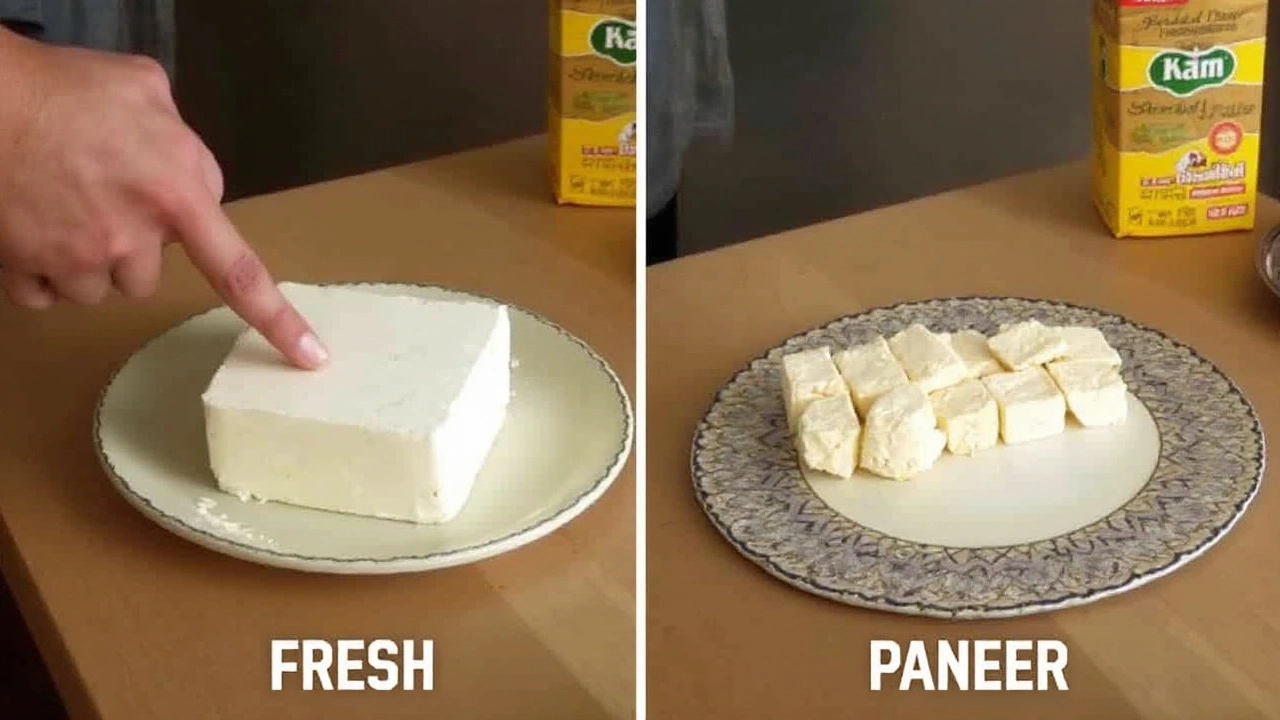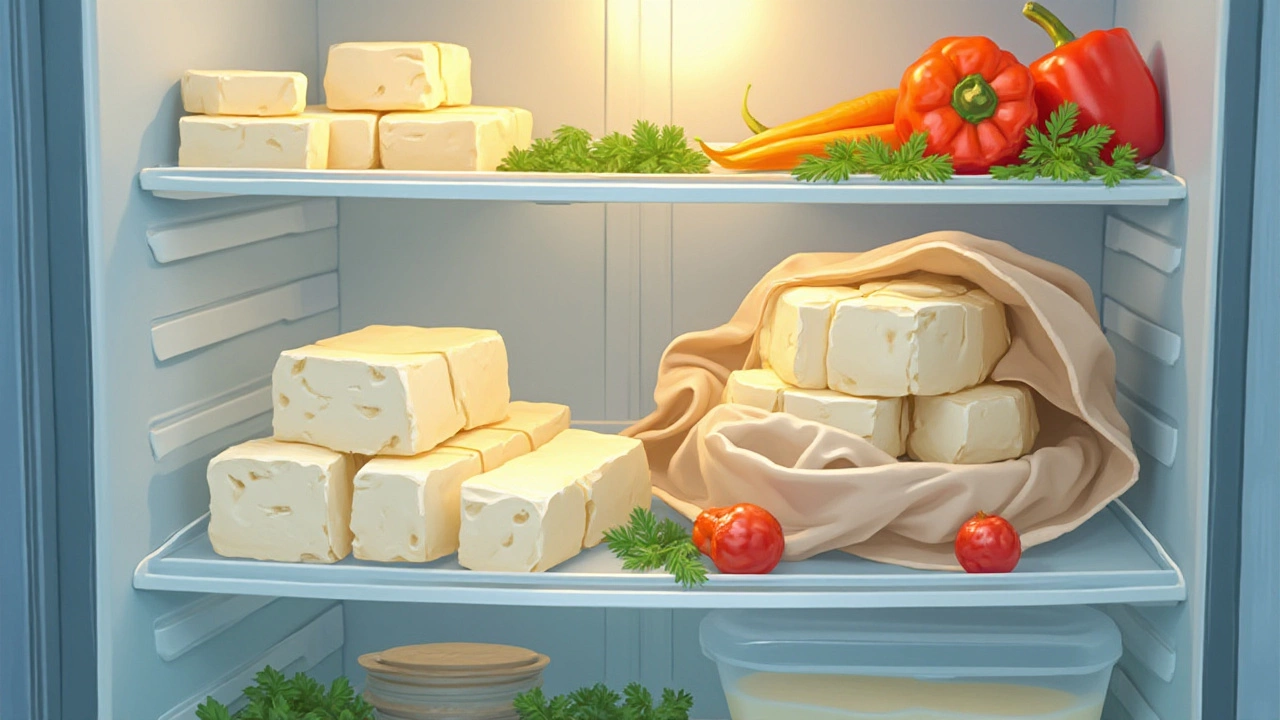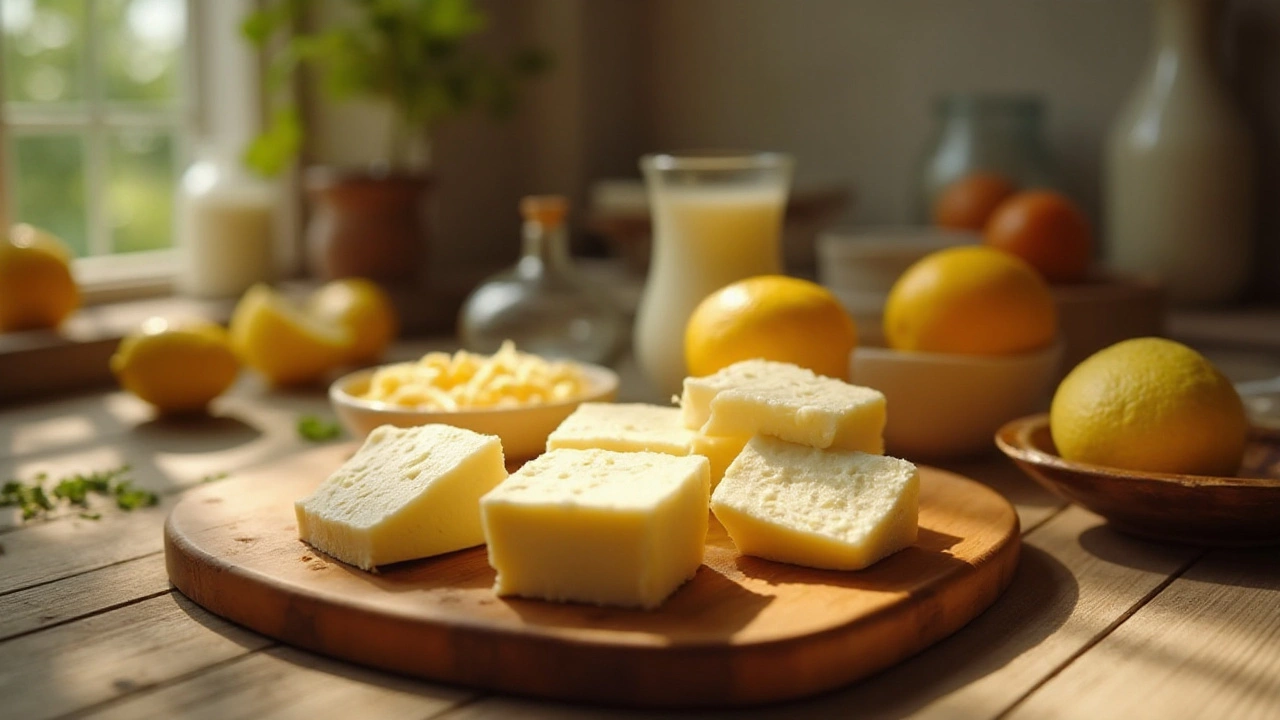23 Dec 2024
- 0 Comments
Paneer, often considered a staple in many kitchens, is loved for its versatility and creamy goodness. Whether a delightful addition to a curry or a star player in a salad, this fresh cheese tends to elevate any dish it graces. However, like all dairy products, paneer has a shelf life, and consuming it past its prime can lead to unpleasant culinary experiences.
With homemade paneer becoming an increasingly popular option, it's essential to know how to spot when it has spoiled. Understanding the changes in texture, smell, and appearance will protect not only your dish's flavor but also your health. Here, we dive into some handy tips and insights to ensure your paneer is always ready to please but never past its prime.
- Signs of Spoiled Paneer
- The Impact of Storage on Paneer
- Preventive Tips for Longer Shelf Life
- When to Consume and When to Discard
Signs of Spoiled Paneer
Identifying whether paneer has spoiled can save you from an unpleasant dining experience and potential health risks. One of the most obvious signs is a change in its aroma. Fresh paneer has a mild, almost neutral smell, whereas spoiled paneer will develop a sour or unpleasant odor. The sourness comes from bacterial growth, which indicates the paneer is no longer safe to consume. When you open your paneer package or unwrap your homemade block, take a moment to check for any strong, off-putting scents. It's a small effort that could spare you the discomfort of spoiled food.
Another telltale sign is a shift in texture. Good quality paneer should be firm and crumble slightly when broken. If it becomes slimy or excessively sticky, it's likely past its prime. This texture change is often due to the breakdown of proteins as bacteria start their destructive work. Watch out for excessive hardness too, which might signify it has dried out and lost its freshness. Maintaining aware of these texture shifts can ensure the paneer in your dish retains its beloved creamy consistency.
Visual cues also play a vital part in identifing spoiled paneer. Spoiled paneer might show discoloration, typically developing yellow or green hues, which suggest mold growth. Healthy paneer should have a consistent white or ivory appearance. Inspect the edges and surface carefully for any signs of mold or unsightly discoloration. As many experienced home cooks will tell you, "If there’s any doubt, throw it out." This common wisdom should guide you if you're ever uncertain about your paneer's state.
Finally, taste is a final resort test when all other signs have been ambiguous. If you've hesitated through the other checks, a cautious nibble might reveal the truth. Spoiled paneer will have a tangy, bitter, or overly acidic taste that is unpleasant and uncharacteristic of its normal mild flavor. This taste difference is the last confirmation you would need to discard the batch. Remember, though, a small taste is more than sufficient—you don't need to consume more than a sliver to verify its state. Being able to pinpoint these spoiled paneer symptoms confidently ensures you’re feeding yourself and your loved ones the best quality food.

The Impact of Storage on Paneer
The way you store paneer can significantly affect its freshness and longevity. This soft, fresh cheese is particularly sensitive to its environment because it's a perishable dairy product. When stored correctly, paneer can maintain its creamy texture and mild flavor for several days. However, improper storage can lead to sourness, mold, and a dry, crumbly texture, rendering it unappetizing and possibly unsafe to consume. To keep your paneer delightful, consider how temperature, moisture, and air exposure can alter its quality. It is often recommended to keep paneer wrapped in a moist cloth inside an airtight container. This method helps maintain the natural moisture of paneer without allowing air to hasten its spoilage. When paneer is exposed to air for too long, it can quickly become a breeding ground for microbes, leading to spoilage.
Refrigeration is key, yet understanding the nuances of how paneer reacts to different temperatures is equally important. Ideally, paneer should be stored at a temperature between 1 to 4 degrees Celsius. This chilly environment slows bacterial growth, preserving its flavor and texture for a longer period. If you need to keep paneer for more extended periods, freezing is an option, yet it may alter the texture on thawing. Frozen paneer can become harder and less creamy. Some aficionados recommend immersing paneer in salted water before refrigeration to enhance its shelf life. The salinity acts as a preservative, warding off bacteria and maintaining moisture. Consider using fresh batches, as reheating can sometimes exaggerate any texture changes.
Expert Advice on Paneer Storage
"To extend the life of homemade paneer, always consider wrapping it well in cheesecloth and sealing it in an airtight container before refrigerating." – A renowned culinary expert.
Storage isn’t merely about temperature; it’s about thoughtful practices. Understanding these storage dynamics can play a pivotal role in reducing waste and keeping your culinary creations delicious. When in doubt, sight and smell are your allies. If your paneer shows any signs of sourness or visible mold, it's best to discard it. Always aim for fresh use within a week for optimum taste and safety. This balance of careful storage can greatly influence your paneer’s role in your dishes, ensuring each bite is savory, creamy, and delightful.

Preventive Tips for Longer Shelf Life
When it comes to homemade paneer, ensuring its freshness can be a game changer in maximizing usage while minimizing waste. The trick lies in storing this delightful ingredient properly and handling it with care. Generally, spoiled paneer can be rather unpleasant, but with a few smart strategies, your paneer can lead a longer and more fulfilling life in your fridge. Start by always wrapping the paneer in a cheesecloth or parchment paper before storing it in an airtight container. This helps control moisture, which is key since excess water can speed up spoilage, making it detect spoiled paneer way too soon.
Another crucial tip is temperature regulation. Paneer should be stored at the coldest part of the refrigerator, ideally below 40°F (4°C), to keep microbial activity at bay. Even slight temperature fluctuations can affect its longevity, so if you frequently open your fridge, consider placing it deeper within. Moreover, it's advisable to consume paneer within a week of making it due to its lack of preservatives. Keeping paneer submerged in freshwater inside the container is an old trick that surprisingly works wonders. Change this water daily to maintain optimal freshness.
If freezing is your preservation method of choice, cut the paneer into individual serving-size pieces before freezing to maintain its texture. Defrost only as much as needed and do this slowly in the refrigerator, not at room temperature. Quality can still dip slightly post-thaw, but it's better than letting your homemade paneer go to waste. A quick blanch in boiling water right before storage can also kill off the surface bacteria, thus prolonging the freshness.
"The secret to long-lasting paneer is understanding its composition. Treat it gently, store it wisely, and always respect its perishability," advises culinary expert Anita Sharma.
Lastly, always use clean utensils when slicing or serving, as bacteria from other foods can accelerate spoilage. Regularly inspect your paneer through sight and smell; if you notice something off, it might be time to bid it farewell. Armed with these tips, you can master the art of prolonging the life of your homemade paneer, ensuring it remains a fresh, flavorful foundation for your favorite dishes. These are not just practical steps; they are your paneer's best defense against the tyranny of time.

When to Consume and When to Discard
Understanding the subtleties of spoiled paneer is essential for both seasoned cooks and those new to making homemade paneer. The time between consumption and discarding is not fixed but relies heavily on observational skills and a few basic guidelines. Fresh paneer should ideally be consumed within a week when stored properly in a refrigerator at temperatures below 40°F (4°C). This timeline may vary slightly depending on factors like humidity and whether your paneer has any added preservatives, though homemade varieties typically do not.
Pare your inspection starting from the appearance and texture. Fresh paneer has a consistent, creamy surface, and it should feel smooth and pliable to the touch. If you notice the surface developing a slimy layer or dark spots, these are signs of potential spoilage. This is particularly relevant for homemade variants where preservatives aren’t prevalent. Any such change indicates that it's probably time to part ways with your paneer.
The next sign is, unsurprisingly, the smell. Good paneer boasts a mild and pleasant dairy aroma. A sour or particularly pungent scent points toward bacterial activity and spoilage, signaling that consuming the paneer might not be safe. Experiencing an unexpected odor as you open the pack should be a clear indicator to steer clear of consuming it.
"The moment you'll go against your gut feeling about food safety is the moment you might regret," suggests culinary expert Arjun Kapoor, emphasizing the importance of trusting one's senses.
Physically tasting the paneer after checking its appearance and smell might not always be necessary, but it is yet another layer of assurance. A noticeable bitterness or any undue sourness beyond the normal mild tang is an invitation to discard it without second thoughts. Spotting these signs ensures no spoilt product sneaks into your meals.
Storage Tips for Optimal Freshness
Storing homemade paneer correctly prolongs its edible life considerably. Always store paneer in an airtight container and place it in the coldest part of the refrigerator. Exposure to air accelerates spoilage, leading to a shorter shelf life. If you have bought in bulk or made too much to consume immediately, consider freezing as an option, but keep in mind that paneer frozen over extended periods can lose its original texture and flavor.
In summary, keen awareness regarding the signs of spoilage coupled with intelligent storage solutions plays a pivotal role in deciding when to consume or discard paneer. Be vigilant, as your culinary creations deserve the best, and your health should always be a non-negotiable priority.
